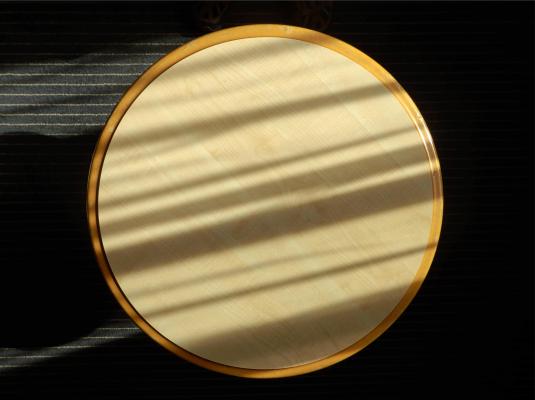When I first started writing these posts on love, I was confounded in part by a friend’s post. There was some shared comment about Love being everywhere with some sort of sentiment that everything is all beautiful, shiny, good. While I don’t want to vouch for negativity and be a naysayer, there was something disconnected and starry-eyed about the whole thing. It felt just as unrealistic as someone being very jaded and nihilistic. Such odd emotional feedback on my end as a reader gave me pause, and I thought about why it felt so … off. This post will examine the thoughts I came to.
In the two previous posts on Love, I’ve challenged some of the ways that the word is used and understood. Specifically, I’ve questioned the idea of Love as some sort of completion of self through the Other, and I’ve also questioned the seeming simplicity of the concept, trying to show that it’s a mysteriously deep experience for us to investigate.
To move forward with this post, I have to back-pedal just a bit. There is clearly a core to the experience of love despite the complexity that I have previously outlined. That core is a positivity. To love is to feel some sort of positive connection, a positive regard toward the loved. I think that that captures the core idea of love. From such a simple definition, hate–a negative refusal of something–is the opposite. This simple distinction is utterly familiar: Love–ultimate Good; Hate–ultimate Bad. This is one of the most basic dualities.
This is why vapidly saying that everything is Love without clarification sounds so checked out. Furthermore, I suppose that part of that feeling for me was knowing about and having received a lot of vitriol and negativity from this person regarding her life. “Everything is Love” is not the case just because you’ve turned your eyes away from the parts of existence you don’t like. Those things continue to exist.
No matter how you spin it there are numerous things in life that most would consider bad. There’s loss in its myriad guises, including death. There’s rape and murder. There are myriad diseases that eat your insides in misery like ebola or grow and slowly turn your body into a defiled ball of pain like cancer. The world is full of traffic jams, inconsiderate people, obnoxious sounds, putrid smells, headaches, natural disasters, injured pets, screaming children, petty revenge, and the dog shit you stepped in on your way to work. This list could go on much, much longer. There’s a reason that theologians have struggled with questions regarding why this is the world we have with all its pain and suffering, with all of these “bad” things if God is all powerful and all Good. This is a conundrum that shouldn’t readily be tossed aside by a simplistic usage of words.
I will do my best to address the problem. Love is indeed everywhere, but not like the relative understanding we have. Love is not everywhere in the sense of everything being positive, good things for us to like, or that are beneficial for us. It may come as a surprise, but it’s a truth you should come to terms with, and the sooner, the better: the Universe with its billions of years of existence and trillions of stars is not about you and what you like. It’s not here to make you happy, and it has no concept of good and bad that it uses to order existence. Again, to return to the point, Love is everywhere, but that’s because everything that exists does exist. If there is any animating metaphysical principle, it has brought this universe into existence out of some sort of intention, some sort of desire for it to be so. This is Love. It is an unfolding of that which wants to be, that which loves to become. This is Love without any duality of good and bad. It includes your highest moment of ecstasy and the most excruciating physical pain you’ve endured, your favorite dessert and that dog shit you stepped in. It is both far more profound and more mundane than any of the dualistic ways we think of love. From a metaphysical standpoint, we can take Aristotle’s famous culmination of his Metaphysics as the principles of the Universe being “Thought thinking itself” and change it into “Love loving itself”.
One thing that a meditation practice aims to get past is the dualistic way we see the world. With the prajna of our awakened and engaged perspective, we can get a sight of this absolute Love that is unfolding around us all the time beyond our more self-interested and relative concepts of Love–the Love of the wanting self.
May all who read this see and find Love.
Gassho
Kahir, the fifteenth-century Sufi poet, writes, “The universe is shot through in all parts by a single sort of love.” This love is what we long for. When we bring Radical Acceptance to the enormity of desire, allowing it to be as it is, neither resisting it nor grasping after it, the light of our awareness dissolves the wanting self into its source. We find that we are naturally and entirely in love. Nothing is apart or excluded from this living awareness.
Over the next few days, each time I opened deeply to the force of longing, I was filled with a refreshed and unconditional appreciation for all of life. In the afternoons I would go outside after sitting and walk in the snowy woods. I found a sense of belonging with the great Douglas firs, with the chickadees that landed and ate seeds from my hands, with the layered sounds of the stream as it flowed around ice and rocks. … When we don’t fixate on a single, limited object of love, we discover that the wanting self dissolves into the awareness that is love loving itself. — Tara Brach, Radical Acceptance: Embracing Your Life with the Heart of a Buddha pp. 154-155.









Recent Comments